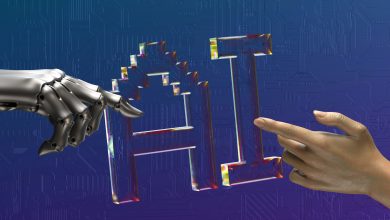
Most companies are asking the wrong question about AI agents. They want to know: “What tasks can AI handle for us?” That’s thinking small.
The better question is: “How can AI agents work alongside our people to achieve things neither could do alone?”
After leading AI transformation across multiple organizations, I’ve seen a clear pattern. The companies getting real value from AI agents aren’t using them as fancy automation tools. They’re treating them as thinking partners.
From Task Bots to Thinking Partners
Here’s what most organizations get wrong. They identify repetitive tasks, build AI to automate them, then measure how much faster things get done. That’s fine for incremental improvements, but it misses the bigger opportunity.
The breakthrough happens when AI agents think alongside humans. They spot patterns missed, suggest approaches humans wouldn’t consider and learn from every interaction to get smarter.
Let me give you three real examples of what this looks like:
Marketing That Actually Thinks. Instead of just running campaigns, these AI agents analyze customer behavior, market shifts and competitive moves all at once. They connect dots that would take humans weeks to see.
One company’s AI agent, for example, noticed a pattern in support tickets: customers kept asking for a feature that didn’t exist. But instead of just flagging this, the agent suggested repositioning their existing product to address that need. The result: significant revenue growth without building a new product.
Operations That Stay Ahead of Problems. Most AI just tells you what went wrong after it’s too late. Intelligent AI agents spot trouble before it starts and develop a way to fix it.
This occurred in a deployment where the AI agent started detecting integration conflicts before they caused outages. It alerted the team, suggested specific code changes and automatically scheduled the right developers to implement them. Multiple disasters were prevented.
Customer Service That Gets Smarter. Regular chatbots follow scripts and hope for the best. AI agents that actually think, learn something from every customer interaction and then teach those insights to human team members.
One agent discovered that customers calling about invoice problems weren’t actually experiencing invoice issues; they needed help with a completely different workflow. The AI developed better diagnostic questions, cut resolution time in half and then trained the human team on these new approaches.
The Architecture of True Collaboration
Building genuinely collaborative AI agents requires rethinking system design around partnership principles. The real magic happens when learning runs both ways. Too often, companies think of AI as a one-way street, where humans train the system, and the system spits out results. That’s a limited view. In practice, the most powerful setups are bidirectional: agents constantly adapt from human input, while people become sharper by working alongside the insights those agents bring to light. Over time, you get a more intelligent system and more capable teams, developing new habits of analysis and sharper strategic instincts.
Collaboration also involves judgment. AI agents need to know when to push forward autonomously and when to pull humans in because creativity, empathy or strategic context is required. That’s not a simple escalation. It’s an intelligent handoff. Smart agents understand when human creativity adds the most value and transfers knowledge seamlessly.
Every interaction should make both the agent and the human better for the next one. That’s the flywheel. When a person corrects or adds nuance, the agent incorporates it, and at the same time, the human is exposed to new analytical angles they might not have seen on their own. Each loop compounds the capability on both sides. The result is incremental efficiency gains, systems that keep getting smarter and people who keep getting stronger.
How to Make This Work in Your Organization
If you’re ready to move beyond AI task automation, here’s what actually works:
Find Your Knowledge Bottlenecks. First, look for your subject matter experts who spend half their day answering the same questions over and over. Those are your best starting points. Build AI agents that can handle the routine tasks but know when to pull in the human expert for the complex thinking that actually matters.
Build Learning Systems, Not Just Response Systems. Here’s the key: every time a human corrects the AI or adds context, the system should remember it for next time. Don’t just fix the immediate problem. Capture that knowledge so it doesn’t happen again. AI should learn from every human interaction.
Measure What Really Matters. Stop obsessing over efficiency metrics alone. Ask better questions: How often are your humans and AI coming up with solutions that neither would have found alone? Are your people getting better at their jobs because they’re working with AI? Is the AI actually getting smarter from working with your team?
Start Small, Think Big. Pick one department where you can perfect this collaborative approach before you try to transform the whole company. But choose carefully, you need people who are willing to see AI as a thinking partner.
The Culture Problem Nobody Talks About
Here’s what most executives don’t want to hear: the most significant barrier to AI collaboration isn’t technology. It’s your people.
If your team is still thinking “us versus the machines,” you’re going to fail. Period. You need people who see AI as an extension of their capabilities, not a threat to their job security.
This means changing how you think about roles, how you measure performance and how your organization actually works. It’s not enough to send people to AI training sessions. You need to invest real time in helping them learn how to think alongside AI.
The companies getting this right are the ones where leadership practices collaboration and sets the tone for their team. When your CEO is working with AI to solve problems, everyone else starts paying attention.
Looking Forward: The Collaborative Advantage
The companies that thrive in the next decade will be organizations that master human-AI collaboration.
This means training humans to work effectively with AI agents while designing AI systems that enhance rather than replace human judgment. It means creating feedback loops where both human and artificial intelligence become more capable through partnership.
AI will transform business operations. The only question is whether your organization will lead that change or watch competitors pull ahead.
The future belongs to centaurs, entities that combine human creativity and intuition with AI’s processing power and pattern recognition. The organizations building those partnerships today are writing tomorrow’s success stories.




